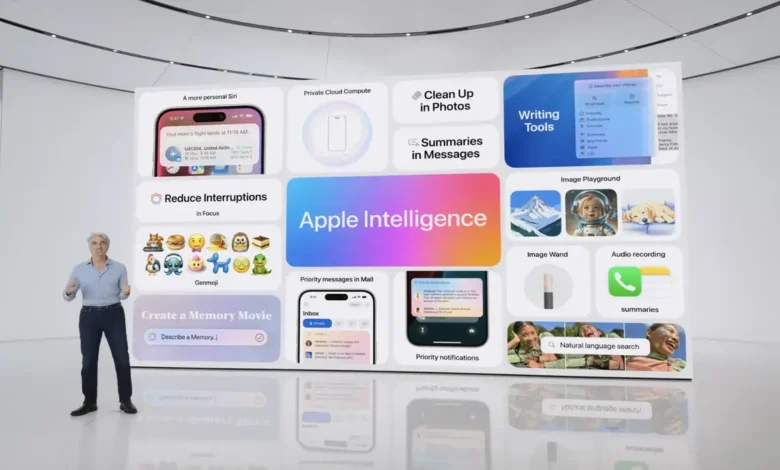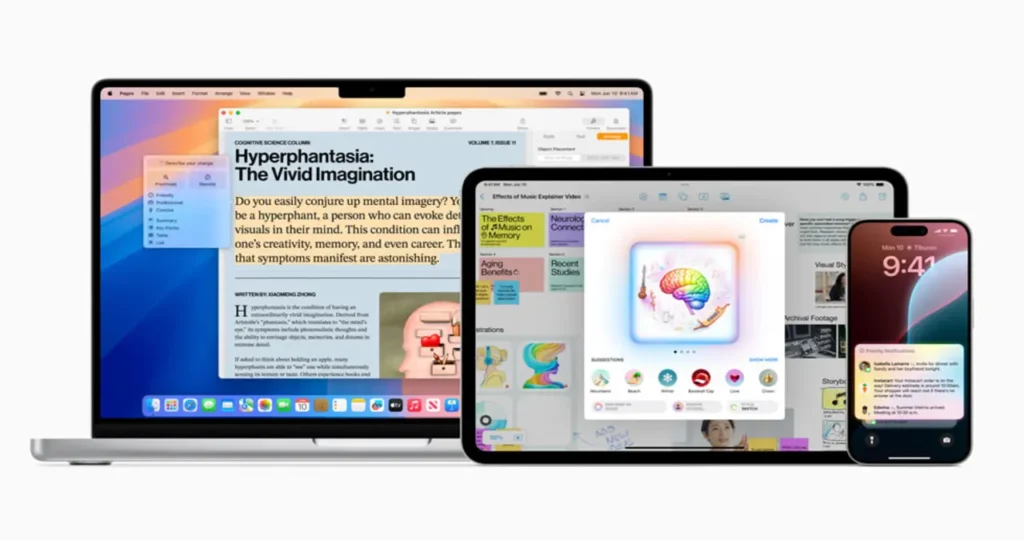How to Use Apple Intelligence: Mastering Smart Features the Easy Way

Apple Intelligence: Understanding how to use Apple Intelligence has become increasingly important for everyday users who want to make the most of their Apple devices. As technology continues to blend with lifestyle, Apple has placed itself at the forefront of smart innovation. From your iPhone to your MacBook, Apple Intelligence works silently in the background, powering your apps, organizing your data, and learning from your behaviors to provide smarter suggestions and seamless functionality.
For most users, the features of Apple Intelligence feel almost magical. Whether it’s recognizing faces in your photos, suggesting autocorrections as you type, or automatically organizing your calendar and reminders, it all feels incredibly intuitive. But learning how to use the properly can take your experience from passive appreciation to active mastery. This guide walks you through the best ways to unlock the full potential of your devices by understanding how to use the in practical, everyday settings.
What Is Apple Intelligence and Why Does It Matter
Apple Intelligence is not just one tool it’s a full ecosystem of features and technologies that work together to make your Apple devices feel smarter, faster, and more intuitive. At its core, learning how to use Apple Intelligence means tapping into a system that understands context, behavior, and preferences. It learns what matters most to you, adjusting itself to serve you better each time you use it.
The magic behind Apple Intelligence lies in its integration across Apple’s suite of devices. Whether you’re using your iPad, iPhone, Apple Watch, or Mac, this intelligence follows you. It processes data directly on your device whenever possible, keeping your information secure and your experience personalized. Learning how to use the doesn’t require coding skills or tech wizardry it’s about becoming aware of the features already baked into your device and making intentional choices to activate or optimize them.
Understanding how to use the also means understanding how Apple prioritizes privacy. While other platforms might rely heavily on cloud-based processing, Apple aims to keep your data on-device as much as possible. This edge in privacy, combined with deep learning, is what makes Apple Intelligence stand apart. It doesn’t just work for you it protects you while doing so.
Activating and Navigating Smart Suggestions
One of the most immediate ways to understand how to use Apple Intelligence is by paying attention to smart suggestions. These suggestions pop up in apps like Messages, Mail, Calendar, and Safari. They’re Apple’s way of saying, “Hey, we noticed this might help,” without being intrusive or overwhelming. The more you interact with your device, the better these suggestions get.
For example, when typing a message, Apple Intelligence may suggest entire responses or event creation based on what’s being discussed. It might recognize an address someone shares and offer to add it to your Contacts. Learning how to use Apple Intelligence includes embracing these small but powerful nudges. Instead of ignoring the suggestion bar, explore what it offers. Often, it will cut your typing in half and help you finish tasks faster.
In Mail, Apple Intelligence reads the tone and intent of incoming messages and helps you craft responses that match your voice. The QuickType keyboard and predictive text features are also part of this ecosystem. The more you use them, the more accurate and personal they become. Getting comfortable with how to use Apple Intelligence in these small ways sets the stage for even deeper integration.
Making the Most of Siri’s Smarter Features
Siri has come a long way from being just a basic voice assistant. Today, knowing how to use Apple Intelligence means knowing how to talk to Siri and how to get the best results. Siri is now contextually aware, which means she understands what’s on your screen, what you were just doing, and even what you might want to do next.
Let’s say you’re reading an email and want to add a reminder to follow up. Telling Siri to “remind me about this tomorrow” will work because Siri knows what “this” is referring to. This kind of contextual awareness is at the heart of Apple Intelligence. It’s not just about voice commands; it’s about smart connections between different apps and services.
Customizing Siri is another way to dive deeper into how to use Apple Intelligence. Adjusting your Siri preferences, setting up personal routines, and activating shortcuts allows you to automate everyday actions. Whether it’s turning off the lights, playing your morning playlist, or sending a message to your partner all through a single voice command Siri becomes more than a helper; she becomes a digital assistant who knows your day inside and out.

Using Apple Intelligence in Photos and Visual Recognition
One of the most impressive places where Apple Intelligence shines is in the Photos app. Learning how to use Apple Intelligence here will completely change the way you interact with your pictures. Apple uses machine learning to scan and organize your photo library. It recognizes faces, pets, locations, and even objects in the background. This makes searching for a specific memory incredibly easy.
Imagine trying to find a photo of your cat sitting on the couch. Instead of scrolling endlessly, just type “cat on couch” in the search bar, and Apple Intelligence will surface the right image. This feature not only saves time but adds a level of functionality that feels futuristic. Knowing how to use Apple Intelligence in this way transforms your massive photo library into a smart, searchable archive.
You can also create memory movies, automated albums, and personalized recommendations based on trips, dates, or events. The device notices patterns like frequent visits to the beach and offers to group those moments into a story. If you’re looking to truly understand how to use Apple Intelligence, embracing these visual tools is essential. It’s not just about automation it’s about rediscovering your digital memories in a meaningful way.
Organizing Your Digital Life with Calendar and Reminders
The Calendar and Reminders apps are where productivity and Apple Intelligence meet. If you’ve ever missed a meeting or forgotten an errand, this is where you can let your device take over some of that mental load. Apple Intelligence observes how you structure your time and begins offering support that’s timely and relevant.
When creating an event, Apple Intelligence pulls data from messages or emails to help fill in the details. It might suggest a title, location, or time based on what you’ve already been doing. For instance, if a friend mentions brunch at a specific cafe, your device might prompt you to add it to your schedule. Learning how to use Apple Intelligence in this way is about paying attention to these auto-filled suggestions and trusting the system to handle more of the scheduling.
The Reminders app works in a similar way. Say you’re browsing Safari and want to remember a specific page. You can share it directly to Reminders, and Apple Intelligence attaches all the relevant details. Over time, your device learns your habits when you usually go grocery shopping, when you respond to emails and nudges you accordingly. These smart reminders are subtle, helpful, and deeply integrated into your daily rhythm.